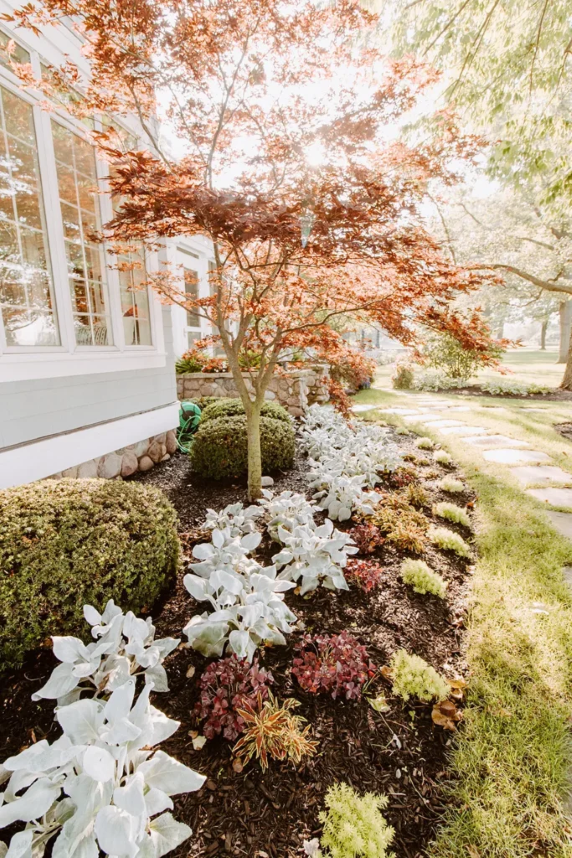As the scorching summer heat gradually gives way to the crisp embrace of early fall, it’s time to shift our focus from backyard barbecues and pool parties to preparing our yards for the upcoming season. To ensure your outdoor oasis survives the cooler months and thrives when spring returns, it’s crucial to take proactive steps now. Here’s how to prepare your yard for fall:
Transition Your Grass
One of the first steps in preparing your yard for fall is to understand your grass type. Most lawns fall into one of two categories: warm-season grasses and cool-season grasses. Warm-season grasses thrive during the summer but may struggle in the cooler months. On the other hand, cool-season grasses are designed to withstand the colder temperatures that fall and winter bring. Knowing which type you have will guide your fall lawn care plan.
For warm-season grasses like Bermuda or Zoysia, early fall is the time to provide some extra care. Consider overseeding with a cool-season grass blend to keep your lawn looking green throughout the year.
Repair Bare Spots
Before the first snowfall arrives, make it a priority to repair any bare spots on your lawn. These areas can be a breeding ground for weeds and pests if left unattended. Start by raking away debris and dead grass, then spread a layer of grass seed evenly over the bare spots. Water them well, ensuring the grass roots establish themselves before winter sets in.
Maintain Your Irrigation System
Your irrigation system has likely been working hard during the summer months. As you prepare your yard for fall, inspect your irrigation system for any leaks or damaged sprinkler heads. Set the timer to water less frequently, as your lawn’s water needs decrease with cooler temperatures. Ideally, you should aim for about 1 inch of water per week. If you’re unsure about your system’s efficiency, consider hiring a professional to conduct irrigation maintenance.
Aerate Your Lawn
Aeration is a critical step in fall lawn care, especially for cool-season lawns. Using a core aerator, which removes small plugs of soil from your lawn, helps improve air and water penetration to the grass roots. This promotes healthier lawns by reducing soil compaction. Aim for a depth of around 2-3 inches and spacing of about 4-6 inches between holes. If you don’t have access to a core aerator, you can rent one or hire a landscaping service to do the job.
Adjust Your Mowing Routine
As fall approaches, gradually lower your lawn mower’s cutting height. This allows more sunlight to reach the grass blades and helps prevent diseases like snow mold, which can be detrimental to your lawn over the winter. However, avoid cutting too short, as it can stress the grass. A good rule of thumb is to maintain a grass height of around 2.5 to 3 inches.
Mulch Your Leaves
Instead of raking up every fallen leaf, consider using a mulching mower. These mowers finely chop leaves and deposit them back onto the lawn as natural mulch. Mulching leaves provides valuable nutrients to your soil as they decompose, enriching it for healthier grass in the spring.
Schedule Fall Clean-Up Services
If you have limited time or need assistance with your fall yard preparations, consider scheduling fall clean-up services. Our experts can take care of tasks such as leaf removal, pruning, and general yard maintenance, saving you valuable time and ensuring your yard is in top shape for the coming season.
Achieve a Healthy Lawn Even in the Cooler Months
By following these fall lawn care tips and staying proactive, you can ensure your yard not only survives the changing seasons but also thrives when spring arrives. Remember, you don’t have to navigate all of these lawn care tasks on your own; the professionals at Dynamic Landscaping are here to assist you. Contact us today to schedule a service and enjoy a worry-free transition into the cooler months!

